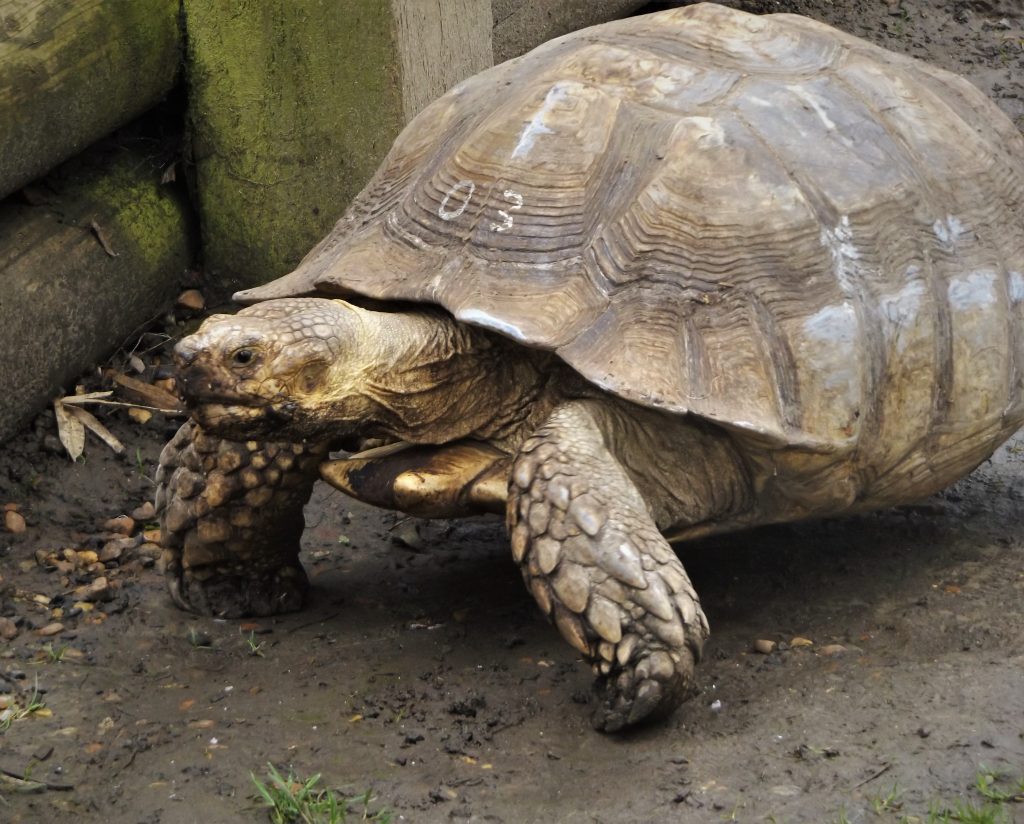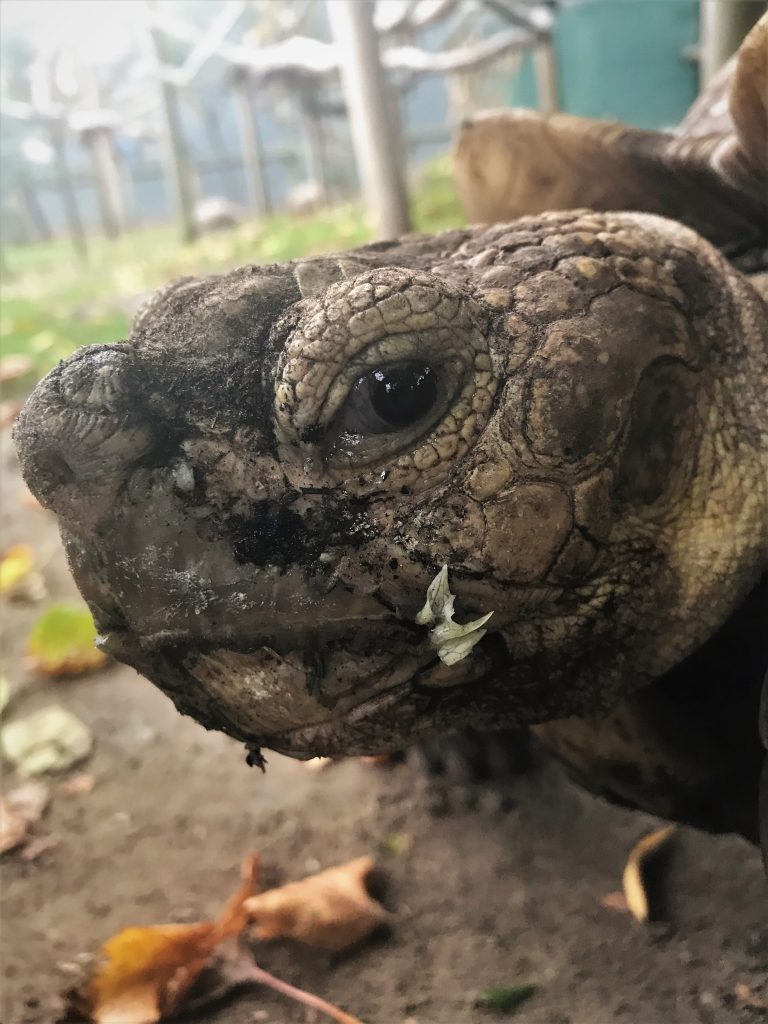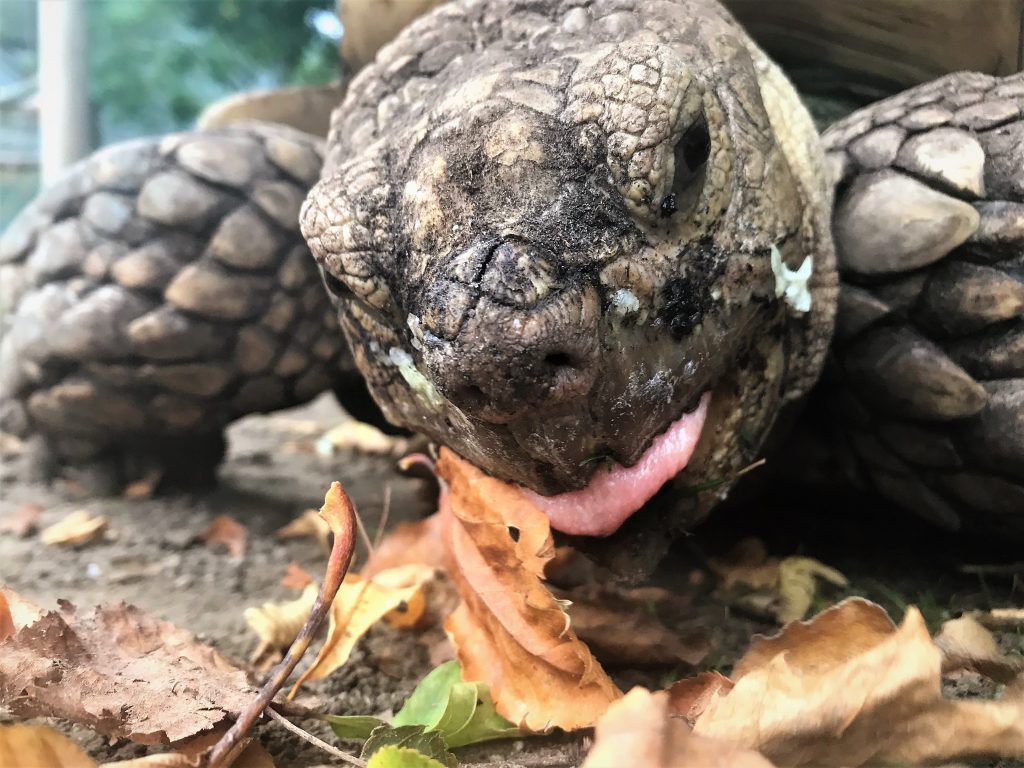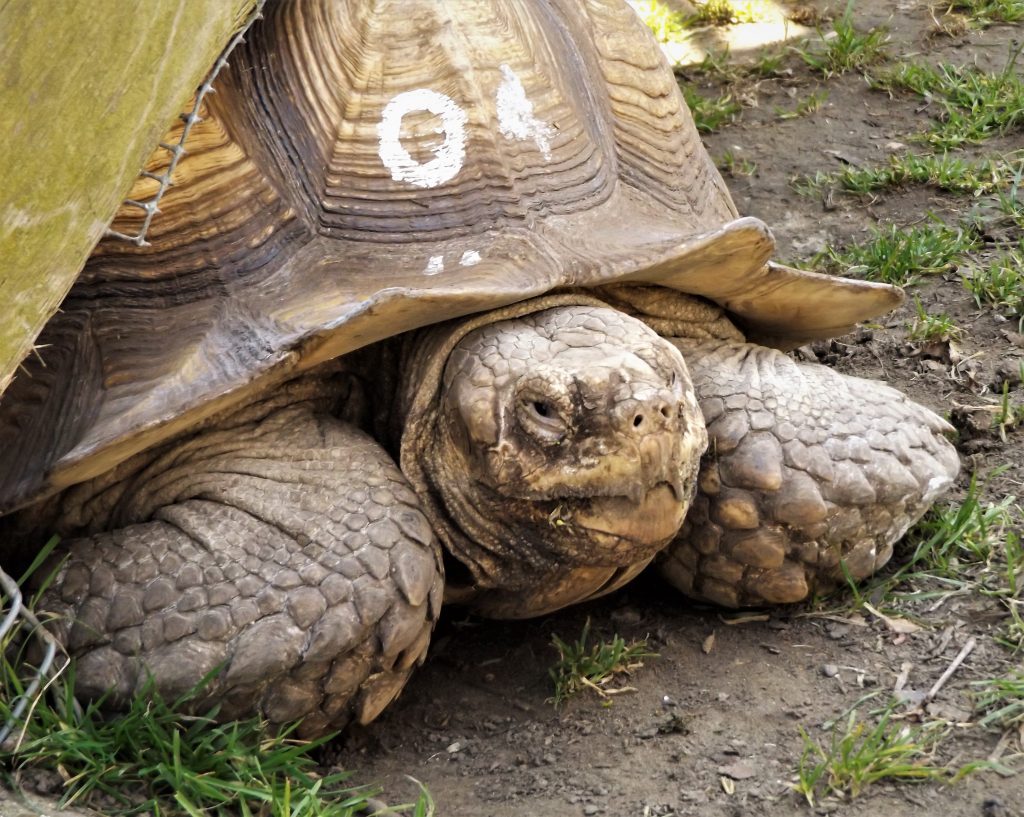This week my blog is going to be slightly different as I’ll be informing you about the African Spur Thighed or Sulcata tortoises that can be found at the park. Usually I write about the mammal species you find on the section however, this reptilian species also finds itself on the section too, we do not discriminate!
Currently we have five BIIIIG lads, you may have noticed that we’ve numbered them 01 is called Tommy, 02 Tamwar, 03 Tarquin, 04 Tyrone and 05 Tyson.
The African spurred tortoise is the largest mainland tortoise, it can easily reach 30 inches in length and 45 kilograms in weight, with some males reaching up to 90 kilograms!

It is surpassed only by the island dweller tortoises from Aldabra and Galápagos (you can also find Aldabra tortoises at the park). Every month we weigh them to make sure they are at a good weight, ours weigh between 40 to 50 kilograms and they don’t seem to be stopping growing anytime soon, so one day we could even reach that 90kg mark.
Turtle or tortoise?
I often hear members of the public referring to the tortoise as turtles and it does depend on who you ask or where you are in the world, but most people recognize tortoises as terrestrial with stubby feet (better for digging than swimming) and a dome shaped carapace. Aquatic and semi aquatic turtles are known as just that, turtles, they tend to have more webbed feet (but not always) and front flippers and their shells are flatter and more streamlined for swimming.
In the wild their hot climate can reach 49 degrees Celsius, to get away from this they will dig dens up to 10 feet (3 meters) deep to recline in during the heat of the day. These havens are significantly cooler than the air above ground.

Their diet consists of eating grasses, flowers, weeds, and cacti. Excessive protein and lack of proper lighting, diet, calcium, and vitamin D3 can lead to irregular bone growth and carapace deformities. At the park we feed ours a balanced diet of vegetables and greens, with access to grass in their outside enclosure. Amazingly, tortoises can go weeks without food or water and when they find a water source they can drink up to 15 percent of their body weight!

Breeding season normally happens in the warmer months, with our group being all boys nothing ever comes from the piggy backs they give to each other.
Males are quite aggressive in nature and will ram and bite each other while vocalising grunts, croaks, whistles and will even try to flip each other over on to their shells. In the summer months there are often crowds of people gathering around the enclosure to watch the tortoises giving each other ‘piggy backs’, with their phones out, I’ve been told they are quite a hit on You Tube.
Sadly they are classed as Vulnerable by the IUCN (International Union for Conservation of Nature). Habitat loss is one of the major reasons that numbers have declined, mainly due to urbanisation and over grazing by domestic livestock.

This species is also eaten by nomadic tribes and used to make longevity potions in Japan, they are also captured and kept as pets in Europe and North America. It is mostly young tortoises that are captured for trade and it takes 15 years for them to reach maturity. Unfortunately all these factors mean this wonderful species could face extinction.
Come and see these big characters at the park soon.


